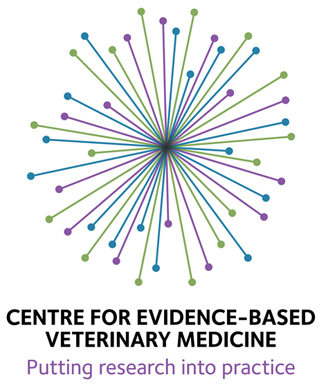Over the last several decades, attitudes towards pets and their role in our households have change dramatically, and in my opinion for the better. Many pet owners see their animal companions as family members rather than objects of utility and entertainment. Pets are brought to the veterinarian with goals and expectations more like those of a parent bringing their child to the pediatrician than of an owner bringing a broken car to the mechanic.
This change in attitude has supported progress in the quality of veterinary care. Better attention to pain control and quality of life, more and better therapies, and of course the expectation that veterinarians will follow the principles of evidence-based medicine that are the standard of care in the human medical field are all positive developments in the profession made possible by clients’ growing desire to have the best care for their animal companions.
And as pet care has improved and our pets have come to live longer, we are more frequently confronted with the issues associated with caring for geriatric patients. Older pets will often have complex and multifaceted medical problems. They may suffer from chronic diseases, including degenerative processes such as osteoarthritis and loss of hearing, vision, mobility, continence, appetite, weight, and even cognitive and behavioral functions. And ultimately our pets will come to the end of their lives, and an important part of our work as veterinarians is helping our patients and their owners through this part of the life cycle.
Because pets are more and more members of the family, owners may not simply wish to euthanize at the first sign of serious disease. Veterinarians can and should be able to support their clients through the process of accepting and grieving for the impending loss of a pet while still strongly advocating for the interests of their patients. Unfortunately, training and resources to help veterinarians do this effectively are scarce, and vets may not be aware that there is more they can offer besides steroids and euthanasia.
In human medicine, the hospice model has become the dominant approach to end-of-life care. While there are many different specific forms hospice care can take, in general the philosophy is to palliate the clinical symptoms of the dying person and also support the patient and the family through the logistical, psychological, and often spiritual aspects of the dying process.
The emergence of hospice represents a salutary change in cultural attitudes which more and more accept that death is part of the life cycle and need not be denied or hidden away. Dying people and their families deserve physical and psychological comfort, and if medical and allied health care personnel are accepting and comfortable with the dying process they can better provide appropriate care.
Of course, in general euthanasia is not an option for people at the end of their lives, and it is a common practice in veterinary medicine, and widely accepted as appropriate medically and morally. So the hospice model has been slow to gain acceptance in the veterinary medical community. However, there are veterinarians and others working to bring this practice to our pets. I think many of the attitudes and practices of hospice are desperately needed in the veterinary field. Like the rest of our culture, I think veterinary medicine would benefit tremendously from a more accepting attitude towards death and dying, and I think our patients and clients can and should receive better care and comfort from us even when we can no longer substantively influence severe disease processes.
However, I am also concerned that some of the people involved in this movement may be bringing irrational ideas and approaches to the process which may ultimately end causing rather than relieving suffering for our patients.
The International Association for Animal Hospice and Palliative Care (IAAHPC) has recently been established, with the stated mission to promote hospice care and establish protocols and standards for such care. The organization was founded after a symposium on animal hospice held March, 2008 at the University of California Davis. The existence of differing, and sometimes incompatible philosophies regarding hospice care are hinted at on the IAAHPC website:
“IAAHPC is committed to being an organization that is inclusive in its philosophy; it will represent different professions and differing viewpoints of animal hospice/palliative care, end of life, and death and dying.
Some in the animal hospice movement see their own views as diametrically opposed to other views. But whether we like it or not, the animals and society will be best served by focusing on our common interests and by respecting our differences.”
A little investigating of the organization’s board of directors provides some insight into these differences. A number of the members are strong advocates of CAVM practices and critical of mainstream veterinary medicine. Dr. Ella Bittel is a “holistic” veterinarian with strong CAM credentials. She practices acupuncture, chiropractic, homeopathy, Bach flower therapy, and TTOUCH and other energy therapies. She is also an active member of a number of CAVM lobbying groups and has published in the Journal of the American Holistic Veterinary Medical Association on the topic of hospice care. In her article, she is suggests that “holistic” veterinarians are more likely to embrace the hospice process and paints a rather bleak picture of mainstream veterinarians forcing euthanasia on their clients and “disenfranchising clients from their basic right to chose[sic] what they feel is best for the animal they have cared for throughout its entire life.”
In her other writings, Dr. Bittel frequently promotes the value of CAVM therapies for relieving discomfort or preserving function when “Western” medicine has failed. As I have discussed before, most of these assertions are unproven or outright false. Dr. Bittel also makes frequent reference to an animal’s “will to live” and “dying wishes,” which she suggests owners and caregivers can intuit through a “hunch,” “tuning in with a calm mind,” and so on. She describes poignantly her loss of her own dog, and includes as a vital facet in making care decisions her inner sense of what her pet wanted.
I respect the energy that Dr. Bittel is putting into promoting the hospice concept, and I agree with her that there is a need for better end-of-life care for our pets. However, I reject the cliché that she puts forward that veterinarians who describe themselves as “holistic” are in any real way truly more aware of or interested in the welfare of their patients as whole beings. “Holistic” has strayed far from its literal meaning to become merely a shibboleth indicating a faith commitment to unproven or outright bogus medical approaches, often relying heavily on vitalism and a vague New Age mélange of spiritual beliefs. Homeopathy, Bach flower therapy, and “energy medicine” offer no real relief of suffering for our patients, and they offer only the limited comfort of placebo by proxy for our clients. I have seen many patients suffering clear and obvious pain because their owners refused to see that the faith-based medicine they were using was failing, and because they had irrational fear of real medical therapies. Cognitive dissonance and other forms of denial are powerful, and we do our patients no service by helping our clients to deceive themselves that their pets are comfortable and happy when they are in fact suffering.
Pet owners desperately want to hold on to their beloved companions as long as possible. Owners and veterinarians want the pets we care for to be happy and well, and we want our efforts on their behalf to be successful. It is all too easy to project these desires onto our pets and see what we want to see. Promoting subjective, intuitive methods of divining what our pets “true” feelings and desires are, and discounting the behavioral signs available to us, as Dr. Bittel sometimes suggests, is a dangerous practice that promotes such emotional projection and the mistaking of our desires and interests for those of our animal companions.
Examples of tragic harm that can be caused by such approaches abounds in human medicine, including the fads of Facilitated Communication and Repressed Memory Therapy. I have had numerous encounters with pet psychics or “animal communicators” who claimed to speak for the inner thoughts and feelings of some of my patients. They often provide vague, reasonable statements that could apply to any animal at any time. They certainly appear to comfort clients, and I have never seen one claim to intuit something from an animal that a clients really didn’t want to hear. But I have also seen the worst of them flagrantly pander to the client’s inability to accept the inevitable loss of their pet and continue to re-assure them their companion was content and did not want to be euthanized despite obvious and awful suffering. Such irrational methods for making decisions about quality of life, palliative care, and euthanasia are not in our pets’ best interests and have no place in veterinary hospice care.
Other members of the IAAHPC founding board besides Dr. Bittel also promote a “holistic” or CAVM-based approach to veterinary care, including Gail Pope, who is affiliate with a “Holistic Animal Retreat” which promotes homeopathy and “animal communication” as part of its services. The philosophical and epistemological perspectives of other board members isn’t readily apparent, and I suspect from the reference to “difference” quoted above that some are strongly in favor of a science-based approach to end-of–life care.
Certainly, there is no need for absolute uniformity in clinical practice related to hospice care, and the IAAHPC statement is correct that the goal of improving end-of-life veterinary care is important enough to warrant attempts to find common ground and accommodation among veterinarians with different approaches. However, if the flagship organization for the hospice movement, the group setting the standards for the profession, is ultimately dominated by faith-based medicine and misleading vitalist philosophies, then the standards that are adopted may very well do more harm than good.
Euthanasia should certainly not be the only or first recourse in serious terminal illness, but neither should it be shunned as “unnatural” or discouraged on the basis of “intuitive” methods of quality-of-life assessment that project the owners needs and wishes onto the patients. And while homeopathy or flower essences may give the owner the comfort of imagining they are doing something to contribute to their pets’ wellbeing, they should by no means be used in lieu of truly effective therapies for control of pain, nausea, and other discomfort associated with dying. Every attempt should be made to ensure that the methods of assessing the condition of the pet and the response to palliative therapy, and the therapies that are employed, are consistent with the best evidence and most sound scientific principles possible. No one should deny our clients the comfort of rituals and spiritual practices that they may wish to invoke when their pets are sick or dying. But just as parents cannot legally or morally deny their children the best scientific medical care available on the basis of religious or other faith-centered beliefs, so animals who are dying should not be denied adequate palliation and euthanasia on the basis of such beliefs. I believe there is much of value in the hospice approach that can and should be brought into veterinary medicine, but I also believe that to do hospice the right way and truly improve the care we give, we must stick to science and evidence-based medical practices.









